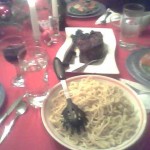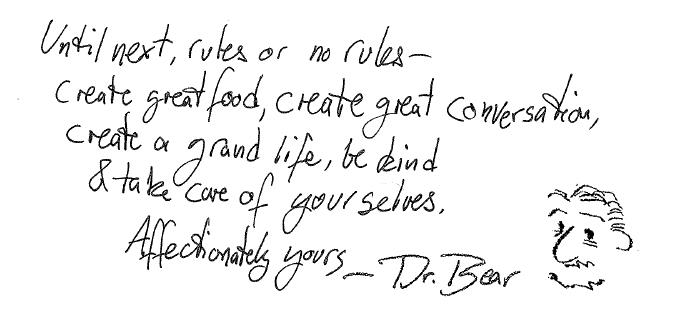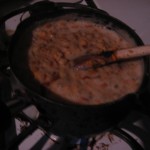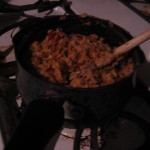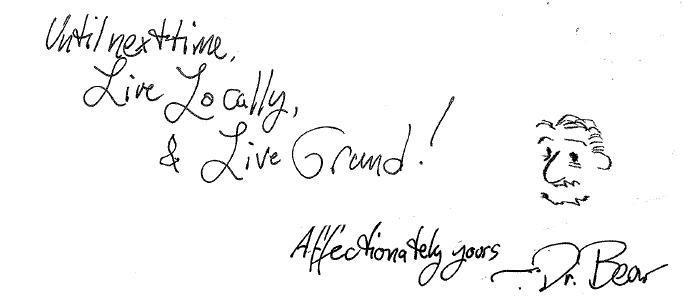I had never tasted biscuits and gravy until I was in my teens.
 When I finally did, I believed I had discovered ambrosia, the food of the gods (there is a dish commonly served up as “ambrosia,” but it is a sickening, gloopy abomination). In fact, one of the reasons I originally chose to move to the South was that it was a place that I could get biscuits and gravy.
When I finally did, I believed I had discovered ambrosia, the food of the gods (there is a dish commonly served up as “ambrosia,” but it is a sickening, gloopy abomination). In fact, one of the reasons I originally chose to move to the South was that it was a place that I could get biscuits and gravy.
If done right, the biscuits are crisp and buttery on the outside, but soft and either flakey or cake-like on the inside, and the gravy is creamy and warm, but also spicy.
When my daughter became a vegetarian, the gravy had to be re-invented.
One of my proudest moments came one Easter a few years back. A friend of ours, Tyler, had given up meat for Lent, and piled up a big plate full of my biscuits and gravy and was digging into them talking about how glad he was to finally be able to eat meat again. We had to tell him he was still keeping his Lenten vows.
The key to biscuits is several things: Don’t over-work the dough, and have a good blend of baking soda or power, fat, and a little bit of something acidic.
Ingredients:
- 2 cups TVP (texturized vegetable protein)
- 2 tsp. Onion Powder
- 2 tsp. Garlic Powder
- 1Tbsp Sage
- 1 tsp. Paprika
- 1 tsp. Worcester Sauce
- 2 tsp. Soy Sauce
- 1/2 cup Red Wine
- a bit of Vinegar
- 1/4 cup Oil
- 1 cup Yogurt (this began as buttermilk, but I like the viscosity of yogurt better; if you are vegan, use some substitute, but add a dash of an acidic, like vinegar or lemon juice; if it is a liquid, use less)
- 1 tsp. Baking Soda
- 2 cups Flour (pastry flour might actually be better, but suit yourself)
- 1Tbsp Baking Powder
- 1 tsp. Salt
- 6 Tbsp cup cold Vegetable Shortening
- a bit of cold butter
- Extra Oil
- Extra Flour (maybe half a cup?)
- Extra Milk (maybe 2 cups, maybe more)
Step 1, gentleman, start your sausages: In a jar or bowl, combine the TVP, seasonings, wine, vinegar, oil, and whatever else suits your fancy. Leave it to soak a bit, you that the TVP absorbs the moisture.
Step 2, start leavening: In a bowl with some extra room (it could expand), combine the yogurt and the baking soda. Let this sit.
Step 4, turn on the heat: Pre-heat the oven to 475 degrees.
Step 5, sift & cut: Sift the flour, the baking powder, and the salt together. Cut in the shortening and the butter, allowing it to form a crumbly mixture.
Step 6, mix: Add the yogurt to the flour, just enough to get it to all stick together; mix it to get this, but as little as possible–only enough to get it all moist & sticking together.
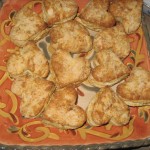 Step 7, roll & cut: Roll the dough out on a floured surface until it is a half an inch or so thick. fold it over, and roll it just a bit. Cut into biscuits with a biscuit cutter, or a juice glass, or a cookie cutter, or a cutlass, or whatever you prefer.
Step 7, roll & cut: Roll the dough out on a floured surface until it is a half an inch or so thick. fold it over, and roll it just a bit. Cut into biscuits with a biscuit cutter, or a juice glass, or a cookie cutter, or a cutlass, or whatever you prefer.
Step 8, bake: Place the biscuits on a greased cookie sheet and bake for 12 minutes, more if necessary.
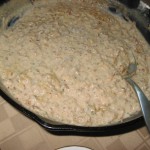 Step 9, the gravy: In a big ol’ skillet with some oil (be generous!), fry the TVP mixture until it gets a bit of texture and brown. Add a few tablespoons of flour and let them absorb some of the oil. Slowly add milk, while stirring, and let simmer.
Step 9, the gravy: In a big ol’ skillet with some oil (be generous!), fry the TVP mixture until it gets a bit of texture and brown. Add a few tablespoons of flour and let them absorb some of the oil. Slowly add milk, while stirring, and let simmer.
Step 10, monkey with the recipe: If it is too thin, dissolve some flour in some more milk and add it too it; if it is too thick, add some milk. If it is too bland, add more salt or sage, or pepper; if it is too spicey, add more milk. when it is fine, turn off the heat or put on low.
Final step, serve: The gravy is traditionally served over a split biscuit,  so that it absorbs the gravy, but adds some texture. You can add eggs on the side, or sausage, or whatever you like. You can have extra biscuits to sop up the gravy, or for apple butter. Go out and face the day.
so that it absorbs the gravy, but adds some texture. You can add eggs on the side, or sausage, or whatever you like. You can have extra biscuits to sop up the gravy, or for apple butter. Go out and face the day.



